Category: Healthy Related Invention
XDR-TB
27, Aug 2019
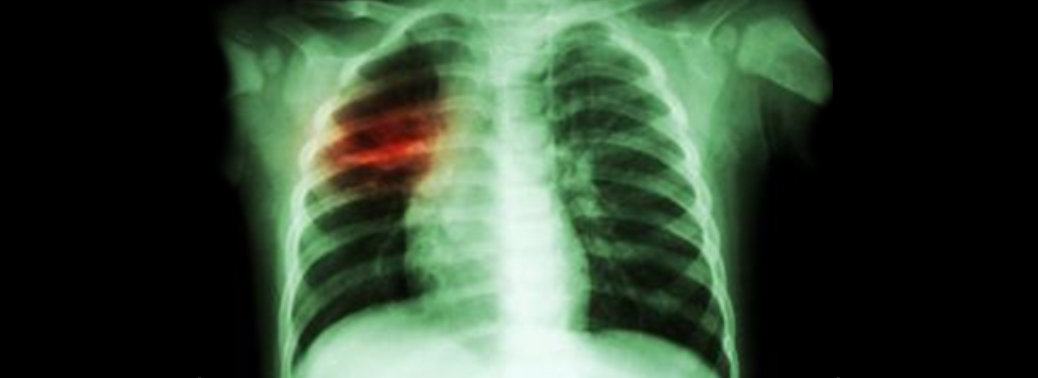
Why in News?
- XDR-TB, an abbreviation for extensively drug-resistant tuberculosis (TB), is a form of TB which is resistant to at least four of the core anti-TB drugs.
- XDR-TB involves resistance to the two most powerful anti-TB drugs, isoniazid and rifampicin, also known as multidrug-resistance (MDR-TB), in addition to resistance to any of the fluoroquinolones (such as levofloxacin or moxifloxacin) and to at least one of the three injectable second-line drugs (amikacin, capreomycin or kanamycin).
- MDR-TB and XDR-TB both take substantially longer to treat than ordinary (drug-susceptible) TB, and require the use of second-line anti-TB drugs, which are more expensive and have more side-effects than the first-line drugs used for drug-susceptible TB.
How do people get XDR-TB?
- People may get XDR-TB in one of two ways.
- It may develop in a patient who is receiving treatment for active TB, when anti-TB drugs are misused or mismanaged, and is usually a sign of inadequate clinical care or drug management.
- It can happen when patients are not properly supported to complete their full course of treatment; when health-care providers prescribe the wrong treatment, or the wrong dose, or for too short a period of time; when the supply of drugs to the clinics dispensing drugs is erratic; or when the drugs are of poor quality.
- The second way that people can develop XDR-TB is by becoming infected from a patient who is already ill with the condition. Patients with TB of the lungs can spread the disease by coughing, sneezing, or simply talking.
- A person needs only to breathe in a small number of these germs to become infected. However only a small proportion of people infected with TB germs develop the disease. A person can be infected by XDR-TB bacteria but not develop the active disease, just as with drug-susceptible TB.
Indian Scenario:
- Cases of XDR TB are much fewer than those of the other drug-resistant strain, MDR/RR TB, and have been reported from 117 countries until 2017, a World Health Organization (WHO) report said. Out of 10,800 cases worldwide, India accounted for 2,650 cases, or almost one-fourth.
- As per WHO, two-thirds of cases of the XDR-strain are in China, India and Russia. These countries also share 47 per cent of the burden for MDR/RR TB.
- The average success rates for drugs to treat the XDR strain has been 34 percent globally.
Vitamin deficiency high among urban adults, says NIN study
24, Mar 2019

Scientists at the ICMR-National Institute of Nutrition (NIN) screened the sub-clinical status of vitamins A, D, B1, B2, B6, B12 and folate among urban adults in the twin cities and they found several vitamin deficiencies and dietary inadequacies hidden under their apparently healthy exterior.
For the first time, explored the blood levels of major vitamins along with dietary intakes of urban adults and explored the homocysteine levels which amplify the chances of non-communicable diseases like heart diseases.
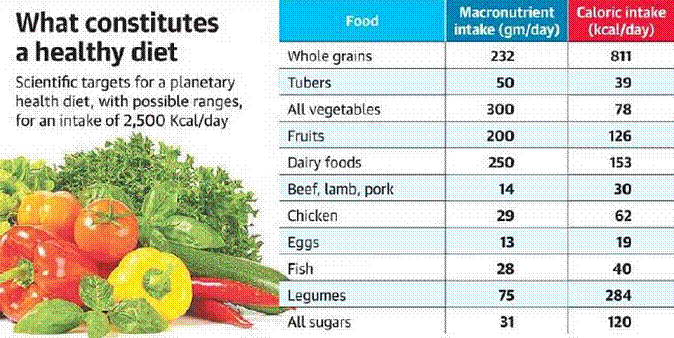
Vitamins:
- Vitamins are organic compounds that are required in small amounts in our diet but their deficiency causes specific diseases.
- Most of the vitamins cannot be synthesized in our body but plants can synthesize almost all of them, so they are considered as essential food factors.
- However, the bacteria of the gutcan produce some of the vitamins required by us.
- All the vitamins are generally available in our diet. Different vitamins belong to various chemical classes and it is difficult to define them on the basis of structure.
- They are generally regarded as organic compoundsrequired in the diet in small amounts to perform specific biological functions for normal maintenance of optimum growth and health of the organism.
- Vitamins are designated by alphabets A, B, C, D, etc. Some of them are further named as sub-groups e.g. B1, B2, B6, B12, etc.
- Vitamin A keeps our skin and eyes healthy.
- Vitamin C helps body to fight against many diseases. Vitamin C gets easily destroyed by heat during cooking.
- Vitamin D helps our body to use calcium for bones and teeth.
- Excess of vitamins is also harmful and vitamin pills should not be taken without the advice of doctor.
- The term “Vitamine” was coined from the word vital + amine since the earlier identified compounds had amino groups.
- Later work showed that most of them did not contain amino groups, so the letter ‘e’ was dropped and the term vitamin is used these days.
- Vitamins are classified into two groups depending upon their solubility in water or fat.
Fat soluble vitamins
- Vitamins which are soluble in fat and oils but insoluble in water are kept in this group. These are vitamins A, D, E and K. They are stored in liverand adipose (fat storing) tissues.
Water soluble vitamins
- B group vitamins and vitamin C are soluble in water so they are grouped together.
- Water soluble vitamins must be supplied regularlyin diet because they are readily excreted in urine and cannot be stored (except vitamin B12) in our body.
| S.No | Vitamin | Deficiency Diseases |
|---|---|---|
| Vitamin A | Night blindness | |
| Vitamin B1 | Beriberi | |
| Vitamin B2 | Ariboflavinosis | |
| Vitamin B3 | Pellagra | |
| Vitamin B5 | Paresthesia | |
| Vitamin B6 | Anemia | |
| Vitamin B7 | Dermatitis, enteritis | |
| Vitamin B9 & Vitamin B12 | Megaloblastic anemia | |
| Vitamin C | Scurvy, Swelling of Gums | |
| Vitamin D | Rickets & Osteomalacia | |
| Vitamin E | Less Fertility | |
| Vitamin K | Non-Clotting of Blood. |
End stigma and discrimination to end TB
24, Mar 2019
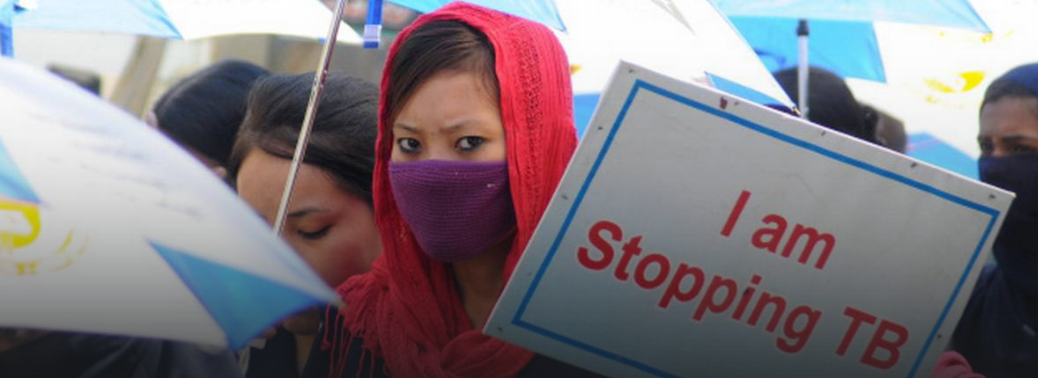
The years 2018 and 2019 have been landmark years in the fight against TB
- In the two years since, the team at REACH, an organisation working on TB since 1998, has witnessed similar scenes play out at other workshops around the country.
- Over 300 TB survivors from across India all of whom attended trainings to help them become powerful TB champions and advocates described stigma as an impenetrable barrier in accessing TB services.
Each TB survivor brought his/her own personal experience to the discussion the difficulties in getting a clear diagnosis, doctor-shopping, the lack of information on what the treatment involved, having to deal with side-effects, the loss of income, to name a few.
While TB had impacted each of their lives differently, they were all unanimous in identifying one cross-cutting barrier stigma and its assiduous companion, discrimination.
Landmark years
- The years 2018 and 2019 have been landmark years in the fight against TB, globally and in India, with the first ever High Level Meeting on TB held at the United Nations last year.
- In India, there is high political will and commitment to end TB, budgets are slowly increasing, new social support schemes have been announced and TB survivors are speaking up.
- There is a lot of talk of ‘ending TB’ and the ambitious phrase — TB elimination — has entered our lexicon.
India and TB
- TB is second only to HIV/AIDS as the greatest infectious killer disease worldwide
- India has the highest TB burden in the world, accounting for almost 25 per cent of global TB cases.
- According to the Global TB Report 2017 released by World Health Organisation (WHO), India has topped list of seven countries, accounting for 64% of the over 10 million new tuberculosis (TB) cases worldwide in year 2016.
- India’s domestic budget for fighting tuberculosis showed a dramatic jump from about ₹700 crore in 2015 to ₹2,500 crore last year.
- According to World Health Statistics 2018 released by World Health Organisation (WHO), India saw estimated 211 cases of tuberculosis (TB) per 1,00,000 people in 2016.
- India has pledged to eradicate tuberculosis by 2025, five years ahead of global target set by WHO.
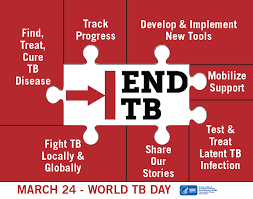
Basics about TB:
Tuberculosis is an infectious, airborne disease caused by the bacterium Mycobacterium tuberculosis. It mainly affects the lungs. It can be transmitted from person to person through the air when people with TB cough, sneeze, laugh or speak, spit, propelling the germs into the atmosphere.
Why TB is an issue?
- With proper diagnosis and treatment, TB can be cured.
- However, too many people with TB don’t seek care for early symptoms and get properly diagnosed. Of those in whom the disease is detected, many do not complete their treatment.
- Despite global efforts to combat TB, which saved an estimated 53 million lives since 2000 and reduced TB mortality rate by 37%, the disease is still top infectious killer in 2016. The disease also has been reported to be main cause of deaths related to antimicrobial resistance and the leading killer of people with HIV.
- The biggest challenge was underreporting and underdiagnosis of TB cases, especially in countries with weak health systems and large unregulated private sectors.
‘90-90-90 target’ by 2035:
- The government has committed to achieve a ‘90-90-90 target’ by 2035 (90% reductions in incidence, mortality and catastrophic health expenditures due to TB).
- This is premised on improved diagnostics, shorter treatment courses, a better vaccine and comprehensive preventive strategies.
Moscow Declaration:
- The declaration calls for eliminating additional deaths from HIV co-infection by 2020 and achieving synergy in coordinated action against Tuberculosis
- and non-communicable diseases (NCDs). India is among signatories to the declaration. Moscow declaration emphasis need for fixing multi sectoral responsibility towards ending TB by 2035, the global target.
Steps Taken by Govt.:
- Indo-US partnership to free India of TB (see Indo-US relation).
- India has signed WTO’s call to end TB by 2030.
- USAID-India End TB Alliance.
IIT Guwahati’s bone graft aids extensive bone formation
24, Mar 2019
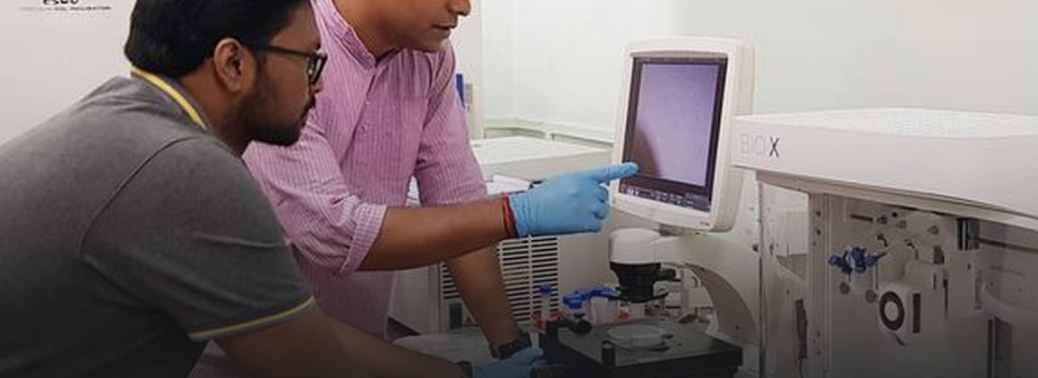
- A scaffold made of silk–bone cement composite doped with silicon and zinc metal ions has been found to regenerate new bone tissue in rabbits in three months.
- The newly formed bone forms a seamless joint with the existing bone and has blood vessels inside it.
- Tests carried out on rabbits with defective thigh bone (femur) showed extensive bone formation of 73% at the end of 90 days compared with 49% in the case of scaffold made only of silk fibre.
- Even at the end of 30 days, there was adequate bone regeneration and new blood vessel formation.

Superior graft
- The bone graft fabricated and tested is superior to currently available ones, affordable and does not require external use of growth factors for bone cells to grow.
- At the end of three months, the silk fibre had completely degraded leaving behind a homogeneous bone produced by rabbit bone cells.
- The newly formed bone had healed the defective femur. The bone cement made of calcium phosphate becomes a part of the bone while the biocompatible metal ions (silicon and zinc) get leached out at the end of 90 days.
The Chemistry behind:
- The scaffold is fabricated by first doping the bone cement with silicon and zinc and mixing the bone cement with chopped mulberry silk fibre.
- The bone cement gets adsorbed on the silk fibre. Liquid silk fibre is then added to bind the chopped fibre and bone cement; the liquid silk also makes the composite highly porous.
- The silk–bone cement composite has higher density and strength, more surface area and high surface roughness, closely resembling a native bone.
- The zinc and silicon ions get leached from the composite and activate bone and blood vessel cells.
- This leads to faster regeneration of the bone tissue and blood vessel formation.
- By doping with these metal ions we are doing away with external addition of growth factor and also making the graft affordable.
Bone regeneration
- The compressive strength of silk fibre is about 40 kPa, while it is nearly double in the case of the silk–bone cement composite.
- Though doping with the silicon and zinc metal ions reduces the mechanical properties, particularly the compressive strength, the bulk strength of the doped composite is sufficient to activate bone regeneration.
- Through in vitro studies carried out prior to experimentation with rabbits, the researchers realised that incorporation of bone cement and metal ion doped bone cement enhanced the bone tissue regeneration capacity.
- While the composite was seeded with bone cells for in vitro studies, in rabbits, the composite was used without adding any bone cells. Bone cells from neighbouring tissue migrate and bind to the scaffold and aid in bone regeneration.
CCR5 Delta 32
07, Mar 2019

Context
- For just the second time since the global epidemic began, a patient appears to have been cured of infection with HIV, the virus that causes AIDS.
About the News:
- This is the second Patient to be cured of HIV AIDS
- Both milestones resulted from bone-marrow transplants given to infected patients. But the transplants were intended to treat cancer in the patients, not HIV.
- The transplants were from a donor with a mutation in a protein called CCR5, which rests on the surface of certain immune cells. HIV uses the protein to enter those cells but cannot latch on to the mutated version.
- CCR5 is the protein that He Jiankui, a scientist in China, claimed to have modified with gene editing in at least two children, in an attempt to make them resistant to HIV — an experiment that set off international condemnation.
About CCR5-Delta 32 Mutation:
- The remarkable research breakthrough that appears to have cured the anonymous “London Patient” of HIV is based on a stem cell transplant involving CCR5-delta 32 homozygous donor cells.
- This is the same treatment that cured Timothy Ray Brown, known as the “Berlin Patient” when he received two stem cell transplants in 2007 and 2008.
- HIV uses the CCR5 protein to enter immune cells, but it can’t latch on to cells that carry the delta 32 mutation. IciStem, a consortium of European scientists studying stem cell transplants to treat HIV infection, has a database of 22,000 donors with this HIV-resistant mutation. About 1% of people of Northern European descent, mainly Swedes, are born with a mutation known as CCR5-delta 32, which “locks ‘the door’ which prevents HIV from entering into the cell. This is only going to work if someone has a virus that really only uses CCR5 for entry. Patient would still be vulnerable to a form of HIV called X4, which employs a different protein, CXCR4, to enter cells.
Brown’s Case:
- Dr Hütter put Brown through an allogeneic stem cell transplant, which involved replacing his immune system with donor hematopoietic stem cells (usually found in bone marrow) so that his immune system could be regenerated, with no malignant cells. Importantly however, the donor he chose carried what is called a CCR5-delta 32 mutation.
Study Magnitude of Substance use in India
20, Feb 2019

- An estimated 16 crore Indians in the age group of 10-75 are consumers of alcohol and around 4.6 lakh children are addicted to inhalant drugs.
About:
- The first countrywide survey commissioned by the Union government on the extent of substance abuse has found that these children are in dire need of help.
- The study Magnitude of Substance Use in India revealed that close to 15 in every hundred Indians consume alcohol band more than five per cent needed medical help to tackle dependence on substance. The survey was conducted by the National Drug Dependence Treatment Centre (NDDTC) under the All India Institute of Medical Sciences, and were released
- The study defines users who have used substances in nine categories, namely — alcohol, cannabis, opioids, cocaine, sedatives, inhalants and hallucinogens – at least once in past 12 months.
Findings
- The study said that 14.6 per cent Indians were found to be alcohol users while 5.2 per cent wanted help. Close to 1.6 crore people in Uttar Pradesh have been found to suffer from alcohol dependence or consumed it in a harmful way. In Bengal, 27 lakh people have consumed alcohol while the figure for Odisha stands at 21 lakhs.
- The number assigned to a state is the extrapolated figure to match the population share of the state. Hence Utter Pradesh is found to have the highest number of harmful and dependent users of alcohol and other substances.
- Tripura (13.7 per cent), Arunachal Pradesh (7.2 per cent) and Chhattisgarh, Punjab and Andhra Pradesh (around 6 per cent each) were the states with highest prevalence of alcohol dependence. The survey found that alcohol dependence is lesser in states where prohibition in in force. For example, only 0.9 per cent of the population in Bihar and 3.9 in Gujarat were found to be alcohol users.
- According to the study, cannabis users number around 3.1 crore; opioid users 2.25 crore; sedative users 1.18 crore; hallucinogen users 12.6 lakh and cocaine users 10 lakh.
- The states which have recorded use of cannabis more than the national average include Uttar Pradesh, Delhi, Sikkim, Chhattisgarh, and Punjab.
- In terms of percentage of population affected, the top states in the country are those in the Northeast — Mizoram, Nagaland, Arunachal Pradesh, Sikkim, Manipur.
- The current survey also points that heroin use prevalence is higher than 2004 and has, in fact, surpassed the opium use. Currently, the prevalence of heroin use is twice as much of opium use in total population.
- Nationally, it is estimated that there are about 8.5 lakh people who inject drugs.
Obesity Linked Cancers on Rise in Young Adults
05, Feb 2019

Study says diet, exercise is key to reducing body weight:
- The risk of developing obesity-related cancer is increasing in successive generations, along with increasing rates of obesity.
- The incidence of 30 of the most common cancers, including 12 that are obesity related, from 1995 to 2014 in people ages 25-84 — more than 14.6 million cases. The study was published is in Lancet Public Health.
- Using five-year age cohorts, they found that for six of the 12 obesity-related cancers (multiple myeloma, colorectal, uterine, gallbladder, kidney and pancreatic) the risk for disease increased in adults in the 25- 49 age bracket, with the magnitude of the increase’s steeper with younger age.
- For example, compared with people born in 1950, those born in 1985 had a risk of multiple myeloma 59% higher, and a risk of pancreatic cancer more than twice as high at comparable ages. At the same time, incidence decreased for smoking-related and infection-related cancers.
- Diet and exercise are of course essential in reducing obesity rates, but that interventions by health care professionals are also needed and only a third of obese patients actually get a diagnosis of and counselling for obesity.
Nilavembu Kudineer Kills Dengue Virus, Protects from Chikungunya
03, Feb 2019
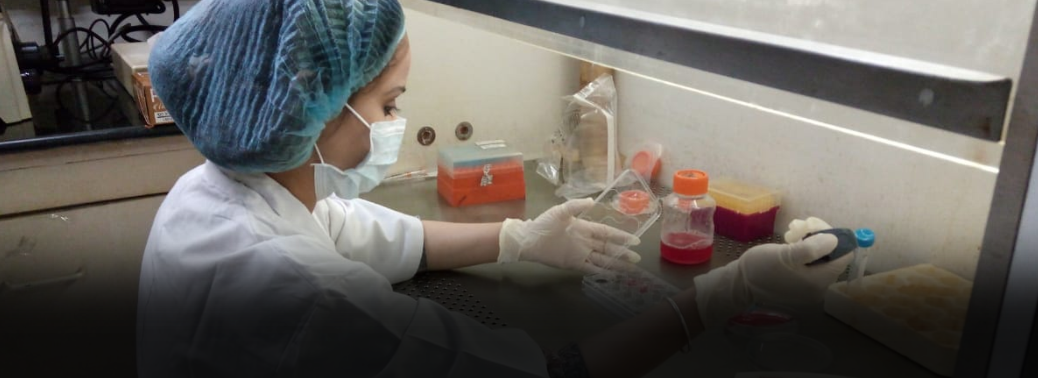
The siddha drug showed significant antiviral activity, Immuno-Modulation:
- Under in vitro conditions, nilavembu kudineer (a Siddha medicine) was found to provide protection against chikungunya virus while it was effective as a treatment during acute phase of dengue infection. Dengue subtype-2, which is the most prevalent subtype in India, was used for testing the formulation.
- There was significant antiviral activity of the formulation at 3% of human dose onwards. Currently, there is no treatment for dengue and chikungunya.
Mode of Action:
- A team of researchers from the International Centre for Genetic Engineering and Biotechnology (ICGEB), Delhi found that thenilavembu kudineer formulation was modulating the host response in the case of both chikungunya and dengue virus but in a different manner.
- The mode of action of the concoction is antiviral in the case of dengue while immuno-modulatory in chikungunya infection. “The reason why we say the formulation is immuno-modulatory is because of the way nilavembu kudineer acts upon viral infections in different types of cells. However, the mode of action of the formulation on immuno-modulation is yet to be understood.
- To study the antiviral activity, the researchers tested the formulation on monocytes and macrophages in the case of dengue and epithelial kidney cells for chikungunya virus. “The monocytes and macrophages are the primary sites of infection in the case of dengue.
- And kidney is the secondary site of infection by chikungunya virus. The primary site of infection of chikungunya virus is fibroblasts before the virus enters the blood stream and then to different organs.
- The joints are the worst affected due to chikungunya virus infection. But we don’t have primary joint cell lines to test the formulation at this point.
Safety studies:
- Safety studies showed that nilavembu kudineer concoction was non-toxic starting from 3% (about 1.8 milligram per millilitre) of human dose. However, the researchers found that andrographis, which is the active ingredient ofnilavembu kudineer, when used alone was extremely toxic at 3% of human dose.
- Human dose is prepared by mixing 5 grams of nilavembu kudineer in 240 ml of water. It is then boiled and reduced to 30 ml and consumed.
- “This shows that nilavembu kudineer as a formulation is safe for use in humans. The cytotoxicity of andrographis reduces drastically when given as a concoction with other ingredients of nilavembu kudineer. The nilavembu kudineer herbal concoction is made by mixing nine ingredients in equal measure.
- “The importance of herbal medicines lies in the fact that they use plant as a whole. This is important because if the modern concepts are used in alternative medicine and only active component is separated, then it will cease to act as a herbal medicine and will plainly act as a chemical drug which can be highly toxic/hazardous to the human body.
- “Based on the results of our study we see the formulation working well for dengue and chikungunya infections especially during outbreak conditions.
- Based on the positive results from in vitro studies, the researchers are in the process of studying the safety and mode of action of the formulation using mice models.
Non-Communicable Disease are top killers in SE Asia
29, Jan 2019

Context:
- As per the WHO report the non-communicable diseases like Diabetes, cancer and heart disease responsible for over 70% of deaths worldwide.
Details:
- Non-communicable diseases (NCDs) — mainly cardiovascular diseases, chronic respiratory diseases, diabetes and cancer — continue to be the top killers in the South-East Asia Region, claiming 8.5 million lives each year.
WHO Goal:
- Containing the NCDs has been listed by the WHO as its health goal for this year along with reducing mortality related to air pollution and climate change, global influenza pandemic etc.
The Cause for Concern:
- “One third of these deaths are premature and occur before the age of 70, affecting economically productive individuals. This results in the lost of loved one and people serving our Nation. The NCDs disproportionately affect the poor, impoverish families, and place a growing burden on health care systems.
- Non-communicable diseases such as diabetes, cancer and heart disease, are collectively responsible for over 70% of all deaths worldwide, or 41 million people. These include 15 million people dying prematurely, aged between 30 and 69.
Causes:
- The four ‘major’ NCDs are caused, to a large extent, by four modifiable behavioural risk factors: tobacco use, unhealthy diet, insufficient physical activity and harmful use of alcohol.
Way Forward for Humanity:
- Consuming fibre and whole grains can reduce health risks from non-communicable diseases such as heart disease.
- Eating fibre-rich foods reduces the incidence of coronary heart disease, stroke, type 2 diabetes and colorectal cancer by 16% to 24%. A higher fibre intake is also associated with lower bodyweight, systolic blood pressure and total cholesterol when compared with lower intake.
- Doctors then recommend — eat less and enjoy your food by eating slowly, fill half your plate with fruits and vegetables, avoid oversized portions which causes weight gain, at least half of your grains should be whole grains, limit consumption of food high in trans fats.
Monkey Fever Cases Confirmed in Wayanad
24, Jan 2019

Context:
- A case of Kyasanur Forest Disease (KFD), a viral disease transmitted to humans through a species of ticks usually found on monkeys, has been reported from the Aranappara hamlet at Appapara, near Tirunelly, in Wayanad district after an interval of two years.
Details:
- The 36-year-old patient, who is at the District Hospital, Mananthavady, is reportedly out of critical condition. The samples collected from the patient were sent to the Manipal Centre for Virus Research and it had been confirmed as a case of KFD, District Medical Officer R. Renuka told The Hindu.
- Meanwhile, a 27-year-old from the area was referred to the Government Medical College Hospital, Kozhikode, with symptoms of the disease. They were working in a farm at Bairakuppa in Karnataka and admitted to the District Hospital on January 20 with symptoms of the disease, Dr. Renuka said. Surveillance have been stepped up in forest areas on the Wayanad- Karnataka border, district surveillance officer Noona Marja said.
- Meanwhile, the district administration, in association with the Health Department, has intensified preventive measures, including a vaccination drive, to combat KFD.
Medicine Stock:
- “Though we have stocked 350 doses of KFD vaccine, the drive is facing a setback in villages on the fringes of forests as many are not ready to accept vaccination,” Dr. Noona Marja said.
- “However, we advised them to use personal protection measures, including gloves and gumboots as well as repellent lotions, before they enter forest.” The first case of the disease was reported in the district in 2013. The virus wreaked havoc in the district in 2015 when 102 cases were reported and 11 persons died of the disease. Nine cases were reported in 2016. Though two suspected cases were reported in 2017, not a single case was reported last year, Dr. Renuka said.
Chinese Doctor Who Gene – edited Babies for ‘FAME’ to face Probe
22, Jan 2019

In News:
- A researcher who claimed to have created the world’s first genetically-edited babies will face a Chinese police investigation, State media said, as authorities confirmed that a second woman fell pregnant during the experiment.
Explained:
- He Jiankui shocked the scientific community last year after announcing he had successfully altered the genes of twin girls born in November to prevent them from contracting HIV.
- The provincial government probe found He had “forged ethical review papers” and “deliberately evaded supervision
- He had “privately” organised a project team that included foreign staff and used “technology of uncertain safety and effectiveness” for illegal human embryo gene-editing,
- But such gene-editing work is banned in most countries, including China. Mr. He will be “dealt with seriously according to the law,” and his case will be “handed over to public security organs for handling
- He said the twins’ DNA was modified using CRISPR, a technique which allows scientists to remove and replace a strand with precision.
What is Gene Editing?
- Genome editing (also called gene editing) is a group of technologies that give scientists the ability to change an organism’s DNA.
- These technologies allow genetic material to be added, removed, or altered at particular locations in the genome. Several approaches to genome editing have been developed.
- A recent one is known as CRISPR-Cas9, which is short for clustered regularly interspaced short palindromic repeats and CRISPR-associated protein 9. The CRISPR-Cas9 system has generated a lot of excitement in the scientific community because it is faster, cheaper, more accurate, and more efficient than other existing genome editing methods
- CRISPR-Cas9 was adapted from a naturally occurring genome editing system in bacteria. The bacteria capture snippets of DNA from invading viruses and use them to create DNA segments known as CRISPR arrays. The CRISPR arrays allow the bacteria to “remember” the viruses (or closely related ones).
- If the viruses attack again, the bacteria produce RNA segments from the CRISPR arrays to target the viruses’ DNA. The bacteria then use Cas9 or a similar enzyme to cut the DNA apart, which disables the virus.
Human Genome editing:
- Genome editing is of great interest in the prevention and treatment of human diseases. Currently, most research on genome editing is done to understand diseases using cells and animal models. Scientists are still working to determine whether this approach is safe and effective for use in people.
- It is being explored in research on a wide variety of diseases, including single-gene disorders such as cystic fibrosis, hemophilia, and sickle cell disease. It also holds promise for the treatment and prevention of more complex diseases, such as cancer, heart disease, mental illness, and human immunodeficiency virus (HIV) infection.
- Ethical concerns arise when genome editing, using technologies such as CRISPR-Cas9, is used to alter human genomes. Most of the changes introduced with genome editing are limited to somatic cells, which are cells other than egg and sperm cells.
- These changes affect only certain tissues and are not passed from one generation to the next. However, changes made to genes in egg or sperm cells (germline cells) or in the genes of an embryo could be passed to future generations.
- Germline cell and embryo genome editing bring up a number of ethical challenges, including whether it would be permissible to use this technology to enhance normal human traits (such as height or intelligence). Based on concerns about ethics and safety, germline cell and embryo genome editing are currently illegal in many countries.
AI beats Doctors at detecting early stage Cervical Cancer
12, Jan 2019

Context:
- Artificial intelligence may be poised to wipe out cervical cancer, after a study showed on Thursday that computer algorithms can detect pre-cancerous lesions far better than trained experts or conventional screening tests.
Details:
- According to the World Health Organization, cervical cancer is the fourth most frequent cancer in women with an estimated 570,000 new cases globally in 2018.
- Despite major advances in screening and vaccination, which can prevent the spread of human papillomavirus which causes most cases of cervical cancer, those gains have mainly benefited women in rich nations.
- Some 266,000 women died of cervical cancer globally in 2012, 90% of them in low-and middle-income nations, according to the WHO.
- This is has much linked the disease cervical cancer with the economic status of the patient.
- Hence there raises a necessity to find extremely cheap, easy and yet accurate method to detect and wipe out cervical cancer.
- According to a report, the AI technique, called automated visual evaluation, found precancerous cells with 91% accuracy.
- The goal is to roll out the technology in the next three to five years, enrolling more patients in clinical trials worldwide, says the study.
About AI:
- An intelligence exhibited by machines
- It is a branch of computer science which deals with creating computers or machines as intelligent as human beings. It is a simulation of human intelligence processes such as learning (the acquisition of information and rules for using the information), reasoning (using the rules to reach approximate or definite conclusions), and self-correction by machines, especially computer systems.
- Nowadays it has become an umbrella term which encompasses everything from robotic process automation to actual robotics.
Areas of AI technologies:
- Robotic process automation: Automation is the process of making a system or processes function automatically. Robots can be programmed to perform high-volume, repeatable tasks normally performed by humans and further it is different from IT automation because of its agility and adaptability to the changing circumstances.
- Natural language processing (NLP) is the processing of human language and not computer language by a computer program. For Example, spam detection, which looks at the subject line and the text of an email and decides if it’s junk.
- Pattern recognition is a branch of machine learning that focuses on identifying patterns in data. Machine vision is the science of making computers visualize by capturing and analyzing visual information using a camera, analog-to-digital conversion, and digital signal processing. It is often compared to human eyesight, but machine vision isn’t bound by biology and can be programmed to see through walls. It is used in a range of applications from signature identification to medical image analysis.
- Machine learning: Field of study that gives computers the ability to learn without being explicitly programmed. Deep learning is a subset of machine learning and can be thought of as the automation of predictive analytics.
- Robotics is a field of engineering focused on the design and manufacturing of robots. Robots are often used to perform tasks that are difficult for humans to perform or perform consistently.
National Strategy on Artificial intelligence:
- It is unveiled by NITI Aayog and it has identified five sectors – healthcare, agriculture, education, smart cities and infrastructure and transportation and hence to to focus its efforts towards implementation of artificial intelligence (AI) to serve societal needs.
- AI refers to the ability of machines to perform cognitive tasks like thinking, perceiving, learning, problem solving and decision making
- This strategy helps to focus on to leverage the transformative technologies to ensure social and inclusive growth in line with the developmental agenda of the government
Scientists Boost Plant Yield by 40%
07, Jan 2019

Context:
- Researchers have found a way to boost the plant growth genetically.
Details:
- Scientists have confirmed 40% increase in tobacco plant productivity using their genetic shortcut.. The same mechanism could be replicated in other plants such as wheat or soy beans in order to meet demand.
- According to the research, the enzyme ‘Rubisco’, which is a key to carbon fixation process (converting atmospheric carbon into an organic compound, consumed by plants), also acts to fix atmospheric oxygen, converting it into toxic compounds that the plant expends considerable energy eliminating it. This competing process is called photorespiration. The scientists have discovered that implanting bits of algae DNA into the tobacco plant’s cells to create a type of biological shortcut would speed up the process of photorespiration.
- According to them, when a plant uses less energy on photorespiration, it will be able to take that energy and put it into plant growth and plant productivity, rather than using it to metabolise this toxic compound.
WITH GENETIC TWEAK, MOSQUITO POPULATION MADE EXTINCT
18, Sep 2018
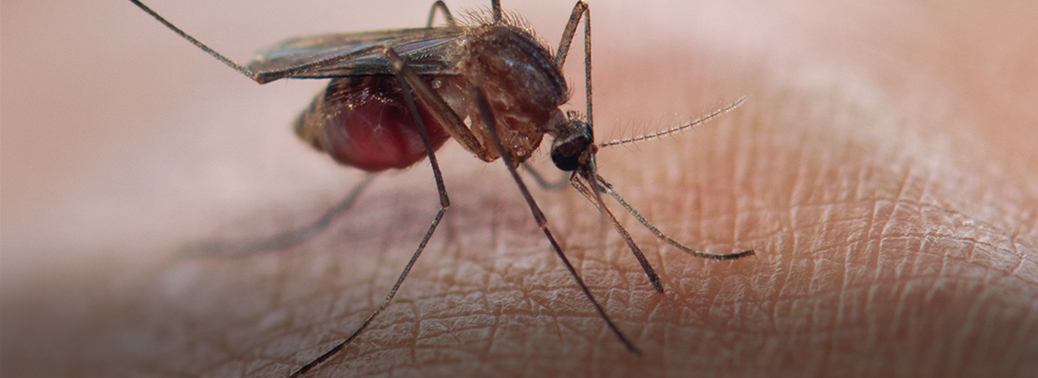
Why in news?
- Scientists said that they had succeeded for the first time in wiping out an entire population of malaria-carrying mosquitoes in the lab using a gene editing tool to programme their extinction.
Background:
- Gene drive technology works by forcing evolution’s hand, ensuring that an engineered trait is passed down to a higher proportion of offspring—across many generations—than would have occurred naturally.
- In experiments with the species Anopheles gambiae, scientists at Imperial College London tweaked a gene known as double sex so that more females in each generation could no longer bite or reproduce.
- After only eight generations, there were no females left and the population collapsed due to lack of offspring.
- This breakthrough shows that gene drive can work, providing hope in the fight against a disease that has plagued mankind for centuries. The next step will be to test the technology in a confined laboratory setting that mimics a tropical environment.
- It will be at least five-to-ten years before we consider testing any mosquitoes with gene drive in the wild.
- The double sex gene targeted in the experiments is deeply “conserved”, meaning that is formed tens or even hundreds of millions of years ago and is today shared by many insects with only minor variations.
- This suggests the technology could be used in the future to specifically target other disease-carrying insects.
- Traditional approaches to controlling mosquitoes — especially the use of insecticides — is becoming less effective,” mainly due to the build-up of resistance
Negatives:
- The ability to eradicate species and natural populations at will with synthetic gene drive is not to be celebrated but should rather sound an alarm.
- There are ecological risks from manipulating and removing natural populations, such as destroying food webs and shifting the behaviour of diseases, as well as social risks of disrupting agriculture and enabling new weapons.
- The issue will be squarely on the agenda in November in Egypt at a UN Biodiversity summit, which has mandated one of its technical committees to assess gene drive’s potential risks and benefits.
- Governments, farmers, indigenous peoples and civil society will be pressing for a full moratorium.
MITRA CLIP
17, Sep 2018
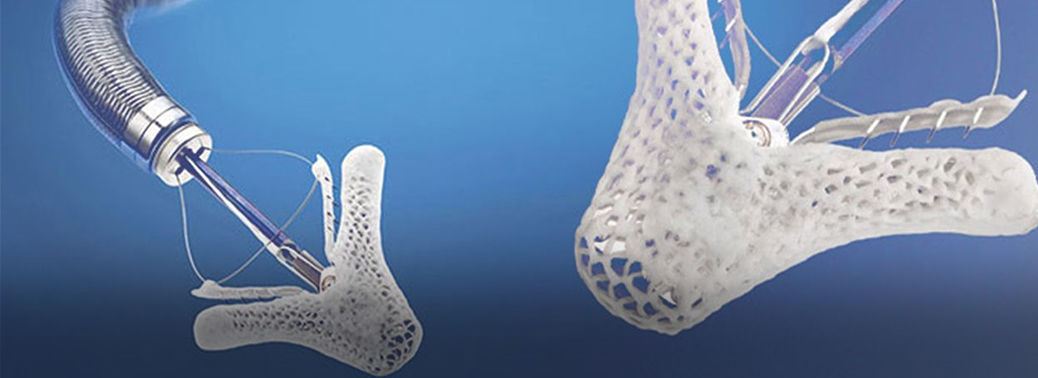
Mitra clip is a tiny device may be effective in treatment of heart failure.Patients with severe heart failure often are gravely ill, too sick to have open-heart surgery to have mitral valves replaced.But the new procedure is much less invasive than open-heart surgery.A cardiologist threads the device to the heart through a blood vessel in the groin. Once it reaches the heart, the MitraClip is guided to the valve, and the device is used to clip the two flaps together.
Predatory Bacteria
16, Sep 2018

PREDATORY BACTERIA
Predatory bacteria are the one that feeds on other bacteria, such as those that cause diseases. Dubbed “living antibiotics,” this group of carnivorous fauna have caught researchers’ attention, for their properties. It helps to fight back against antibiotic-resistant bacteria.






